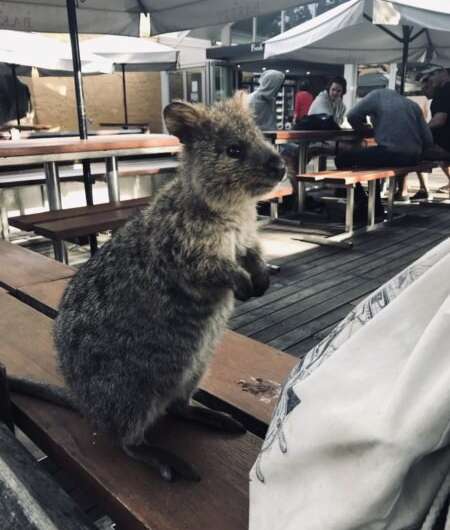Quokkas: What happened to the 'happiest animal in the world'

Australia, recently devastated by severe wildfires, is no stranger to the consequences of climate change, habitat destruction and invasive species.
The quokka, a small marsupial native to Australia, is one such example of a species vulnerable to extinction in the country's harsh surroundings. Known as the "happiest animal in the world" due to its cute and friendly appearance, these creatures are now only found in a few isolated forests and small islands.
In a new study, published this month in the Journal of Zoology, researchers at Vanderbilt University demonstrate evidence that invasive species, most notably foxes, were likely responsible for the dramatic decline of quokkas over the past century.
"Australia has experienced catastrophic losses due to warming temperatures, drought, and the combination of these effects on resident animals," said Larisa DeSantis, senior author and Associate Professor in the Department of Biological Sciences and Department of Earth and Environmental Sciences at Vanderbilt. "The iconic wildlife Australia is best known for, evolved largely in isolation and has been in decline since Europeans introduced foxes, rabbits, goats, and other animals that have preyed upon and/or competed with native animals for food and water."
Until now, the reason for the decline in the quokka population was unclear. Some studies attributed the decline to climatic and vegetative change, while others have pointed to overhunting and/or the introduction of non-native species.
To study the ecology of these mammals, DeSantis and undergraduate student Elinor Scholtz, the lead author of the study, examined the teeth of fossil and modern quokka specimens. By molding and drilling their teeth, they were able to determine the types of plants consumed and attributes about their habitat—through time and between mainland and island populations.
"Piecing together the ecological history of the quokka helped us better understand why they are an isolated and vulnerable species today," said Scholtz. "We learned that quokkas on mainland Australia today occupy denser forests than in the past, likely to avoid predation by foxes. In contrast, quokkas typically live in more open habitats and feed on tougher vegetation on islands that lack foxes."
While they occur in high numbers on Rottnest Island, an island that foxes were unable to occupy, numerous quokkas die on Rottnest Island every summer due to the lack of sufficient freshwater—with mortality only expected to increase with warmer temperatures and more frequent droughts.The destruction caused by brushfires in Stirling Range in Western Australia has also made these 'vulnerable' animals even more prone to extinction.
"To put this all in perspective, the entire geographic range of quokkas is only a fraction of the size of the forests that were completely decimated from fires during one year in Australia," said DeSantis. "We are essentially playing roulette with native species in Australia, and the odds are stacked against quokkas and many other native animals in the face of invasive species, fires, and the current climate crisis."
More information: E. J. Scholtz et al. Invasive species, not environmental changes, restrict the population and geographical range of the quokka ( Setonix brachyurus ), Journal of Zoology (2020). DOI: 10.1111/jzo.12765
Journal information: Journal of Zoology
Provided by Vanderbilt University



















